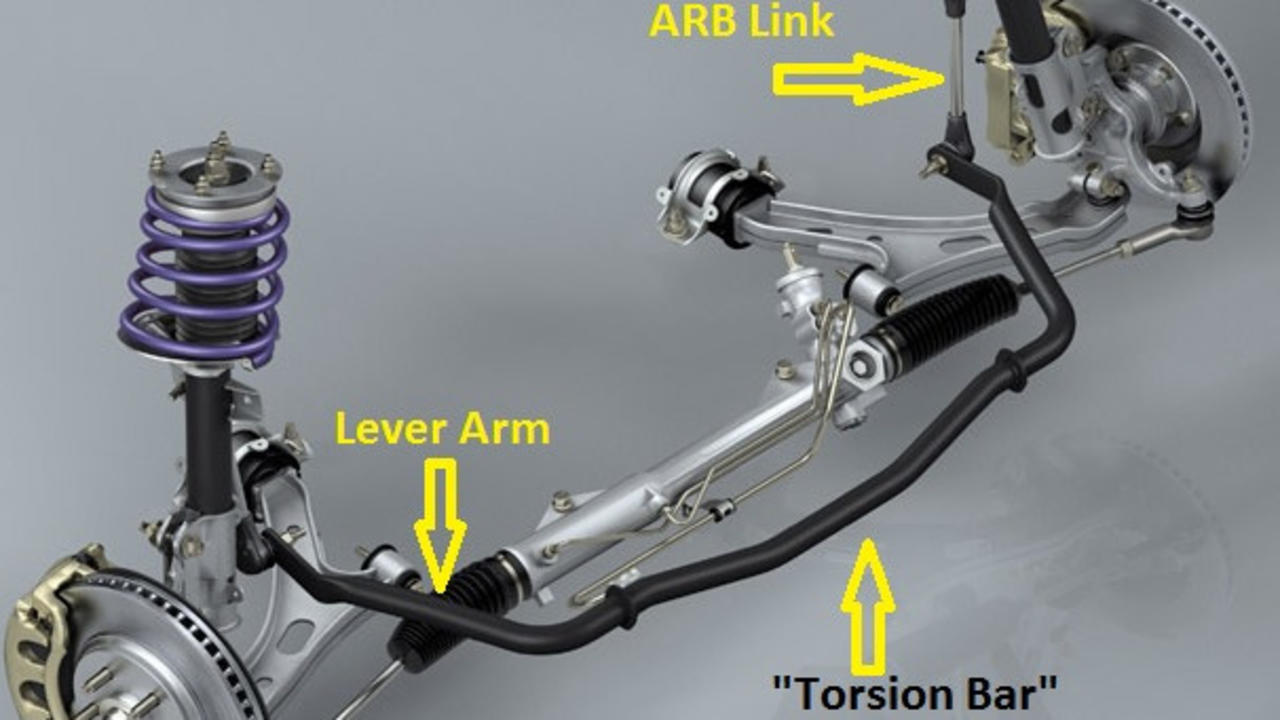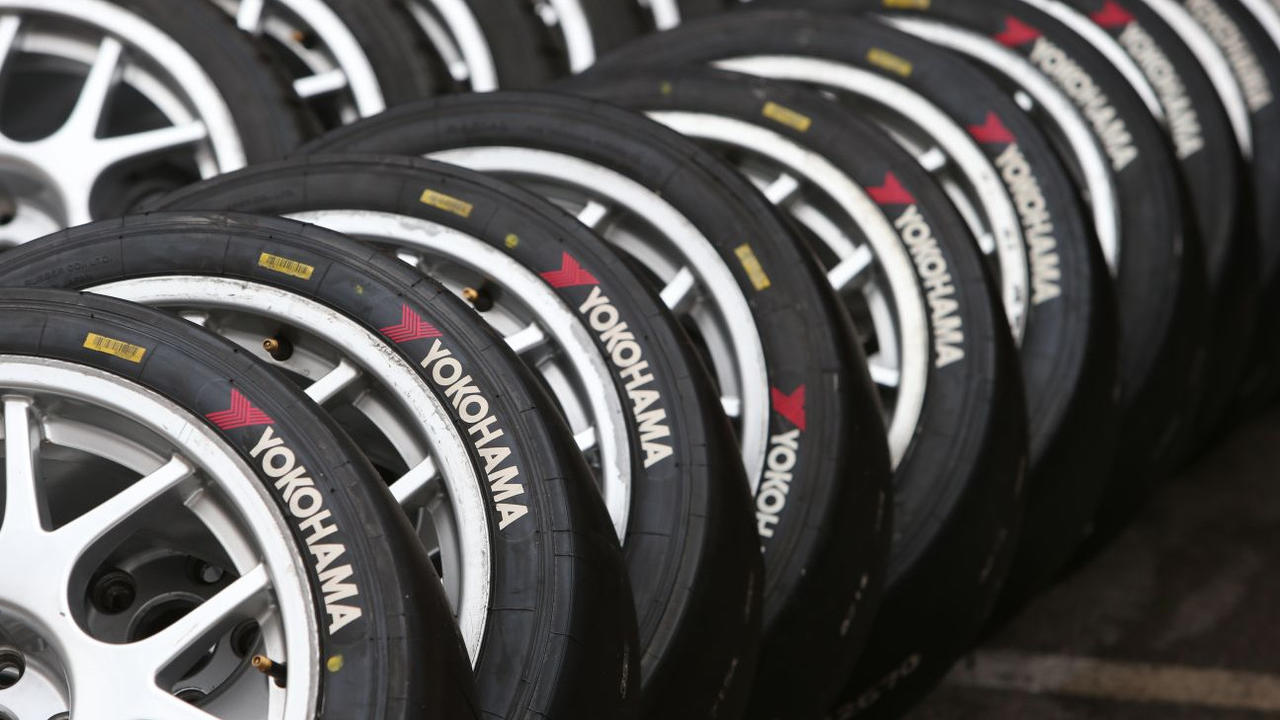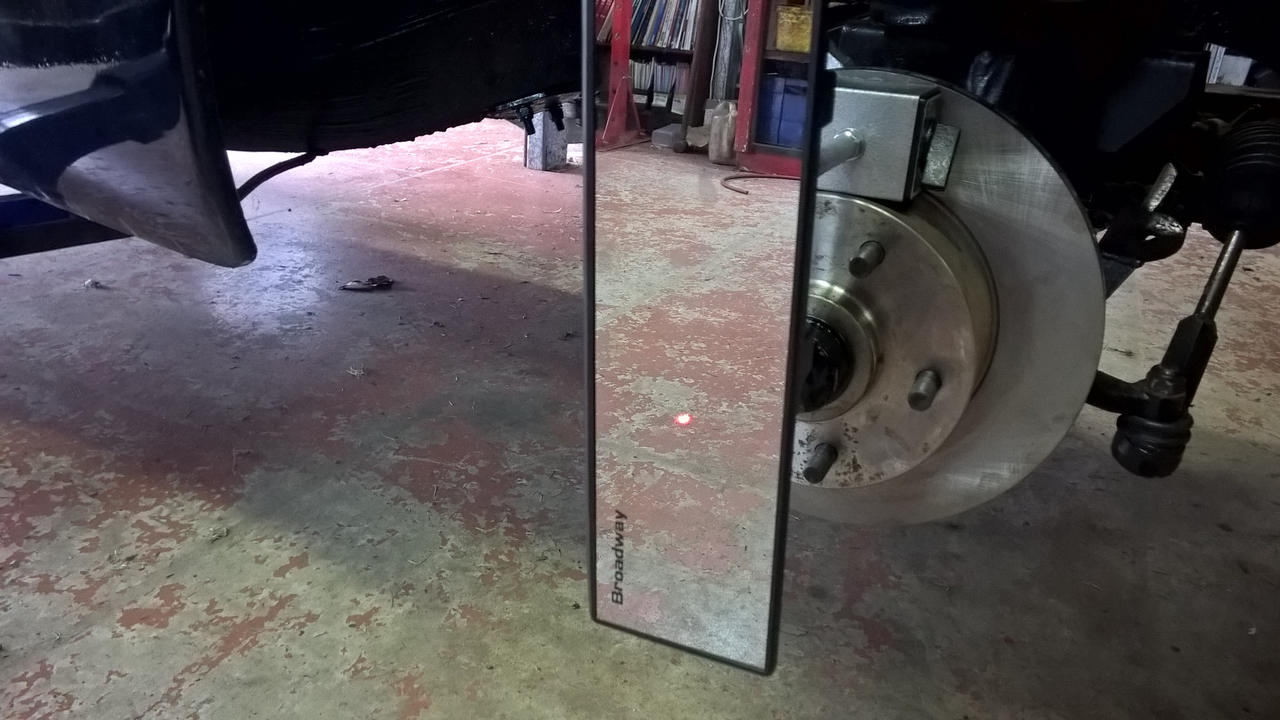Anti-Roll Bars? A Good or a Bad Thing?

Today, I want to show you our very latest thinking on anti-roll bars (ARBs). (Also known as sway bars or stabilizer bars.)
Anti-roll bars are often characterized as a necessary evil. Racers know you need them to restrict roll, but many suggest the interconnection between wheels on the same axle causes “bad things” to happen.
Proponents of this view say things like “the suspension ceases to be truly independent”. On the surface, this might appear to make sense.
The reality is very different. The interconnection between wheels on the same axle has a negligible effect for racing and high performance.In fact, for racing and road performance, the anti-roll bar is a “good thing” and there are no downsides – only limitations as to how stiff you can go, just the same as there are limitations as to how stiff you can go with the suspension springs in your car.
I know. This is a long way away from traditional thinking. But follow along with the rest of this article, and check o...
Our #1 Rule for Suspension Tuning at Racing Car Technology

In the opinion of many in racing, soft springs make more grip by allowing the suspension to follow the undulations in the road.
Our experience at Racing Car Technology, over nearly twenty years of setting up race cars is very different.
Our number #1 priority for Suspension Tuning, is that we need stiff suspension to make grip at the tyres. Yet the counter argument, that we need soft springs for grip, is out there, and etched into our thinking. Faced with a handling problem, anyone of us might backslide into the old ideas.
Let’s be clear about this – if we have springs that give the stiff suspension frequencies we recommend for racing – there will be no magic softer spring we can fit, that will suddenly make more grip.
Proponents of the “soft springs for grip” scenario, suggest that the better handling you get with stiffer springs comes only from the improved car response – ie driver feel, speed of response, less variation of critical suspension angles – toe, camber, caster.
Th...
Did They? Run Very Soft Suspension in 1960’s Race Cars?…

Why should we be interested?
Well, the problem is that the misconceptions of the past still affect us today. Have you heard anything like “maybe if I could get a bit more compliance in the suspension/allow the car to roll more, I could get more feel/better grip/ more heat in the tyres.” This is NOT where would start to fix issues with a car, adapt to a new tyre, or indeed to do a new set-up.
In the 60s, for open wheeler and sports racing cars, you can imagine there would have been a distinct philosophy at play in guiding designers as to how stiff the cars should be. That philosophy was soft springs make more grip. There must have been NO track testing aimed at disproving this theory.
We can also speak from experience on cross ply tyres of similar construction to tyres in the day, that tyre construction was not a reason to run so much softer.
“Racing and Sports Car Chassis Design” by Costin and Phipps. My copy is a second edition, 1965. In talking about suspension stiffness, “Here...
Balance is not enough!! James Doesn't Quite Complete This Pass...


In the first snapshot from James Burge's video SMSP Formula Ford April 2017 Race 1, you can see him reaching down to adjust the balance for more stability, less oversteer, using the in-car lever with cable attachment to the blade adjustable rear anti-roll bar.
He Is about to attempt an outside move for the lead in 200kph+ turn 1. He does get up to the front wheel of Lachlan on the inside, but Lachlan get's a better run in the corner exit, and leaves James to gather it all up and avoid running off the edge of the circuit.
The idea of the balance adjustment for the high speed corner is that with greater stability, the car is to some extent self correcting - the driver is not chasing every tiny movement of the car. There may also be some grip left at the rear tyres to help the driver sense a motion of the car that does need correction.
After the fast corner, the driver can adjust back to a preferred balance for slow and medium speed corners.
To determine the balance of a car...
When Car Set-Up and Balance is Everything…


James Burge’s assault on the NSW Formula Ford Championship continues in the second round this weekend at Sydney Motorsport Park.
His Listec Duratec WIL 013 Formula Ford is some sort of a weapon. The Duratec cars are seriously quick – some 3 ½ seconds a lap quicker at Wakefield than the Kent engine FFords.
James is a CAMS NSW Champion in Superkarts, and returning to a track he knows well.
When Car Set-Up and Balance is Everything…
James has had too much understeer, and the Listech team have worked with him using our Weight Transfer Worksheet to get balance suited to his driving style.
It all starts with getting the numbers into our Racing Car Technology Weight Transfer Worksheet™. We are calculating and matching suspension frequencies (a measure of suspension stiffness) front and rear, and calculating the weight transfer distribution that we know (all things being equal) will balance the car. All done with simple to do weights and measurements - then enter the data into our ...
Is Wayne Rogerson Really Superman?




Is Wayne Rogerson Really Superman?
Has anybody checked his T shirt under his racing suit? Could he be Superman? Or has he just got Jonesy’s lucky red underpants?
Here’s Wayne holding the Oran Park Cup in 1970, with his Falcon behind him and then there’s the pic of the car hammering away up towards the dog leg at Oran Park.
Then there’s the pic of Wayne winning a couple of races at the 2017 Phillip Island Historics. Great stuff. He must stand alone. The only driver who has won in a national open category in 1970 and can follow it up with race wins in 2017, nearly 47 years later. Perhaps Jim Richards will get there eventually – he’s five years younger than Wayne.
Wayne rang me after the race meeting to thank Neville and I for the race set-up we gave him. He’d had problems with inexplicable oversteer – like a full handful off opposite-lock in turn 1 at Sydney Motorsport Park. He said “The car’s good and the set-up worked just like you said it would.”
Thanks, Wayne. All power to you.
Nevill...
Grant Denyer’s Tarmac Rally Crash – Is a Mid-Engined Car a Good Weapon for Rally Stages on Public Roads?

What? I hear you cry. The fastest cars in the world are mid-engine. All the greats of motor racing have driven mid-engine cars since the 1950s.
Surely this layout is the best for any quick car where performance is paramount. The mass located around the centre of the car, and the associated rotational inertia, should help the car to turn better. What more does the driver need to go fast?
Faster, yes. But stability might be the bigger requirement in high speed driving where there is no room for error. With stability comes more control options, and the ability for the car to be self-correcting to at least some degree.
Here’s the problem. In car design, there is always a trade-off between response and stability (ease of control).
Rotational inertia can work in one of two ways, depending on the car. Either promote an increase in lateral velocity at the rear axle, build tyre slip angles faster at the rear, improve response, or decrease lateral velocity at the rear axle, slow respo...
The Nature of Tyre Grip


Breakthrough Technology – How is Grip Created at the Tyre?
In the first of our “Key Performance Concepts”, we discuss creating grip at the tyres through optimising the suspension spring stiffness (ie stiffer springs create more grip).
How did we come to this conclusion? Why is it a central plank in our thinking about suspension set-up?
When you are doing set-ups for a living, there is one driving force – you get a big tick if the car is faster and pretty much a zero if it’s not. After a while, the evidence was staring us in the face – the cars with the optimized spring stiffness were seconds faster per lap.
Furthermore, to help us with our thinking about set up, we need some explanation over and above the empirical evidence. The following relates to the properties of tyres:
What happens with tyre grip is that the tyre rubber keys into the tiny peaks and valleys of the asphalt surface. Stiff springs result in higher frequency vibrations at the tyre contact patch. This has t...
What Tyre Pressure For Racing?


“What tyre pressures should I run?” Always a hot topic of discussion among racing drivers and enthusiasts.
In circuit racing, the tyres build up from a cold pressure at ambient temperature, and then stabilize at the operating pressure (hot pressure). Here are your target hot pressures:
I want to show you some very simple rules for setting tyre pressures, and then go over some really useful insights we can get from real world tyre test data.
Target Hot Pressure
The operating hot pressure is your target. Immediately you come in from your first run of the day and your tyres are up to temperature, you will bleed the tyre pressure down to your target. As the day progresses you may be building up more pressure again due to ambient temperature increase, and heat from your brakes generated in longer runs. So you will adjust pressure accordingly.
Here's the bottom line. Maintaining your target hot pressure for the major part of your race, whether it is a ten lap circuit race, or...
Bump Steer Made Easy


When it comes to bump steer, if your like most racers, you're thinking bump steer could be important, but haven't got to checking your car yet.
Regular mechanics and alignment shops don't do bumpsteer. Specialist racing services might - but at what cost? Are they accurate? How accurate do they need to be? Will they know how to fix it safely?
With our new on-line training course, "Bump Steer Made Easy", a mirror, and a simple laser you can buy from the hardware store, you have everything you need to check your bump steer. Then, to fix it, follow our practical advice as to how to do just that.
Adding to our problems with bump steer, many of us now race independent rear suspension cars, where live rear axle once ruled. In changing anything affecting the suspension geometry, for example ride height, it's interesting to see what affect the change has on the bump steer curve.
With our instructions, checking your bump steer is incredibly easy and straight forward.
There's been a l...




